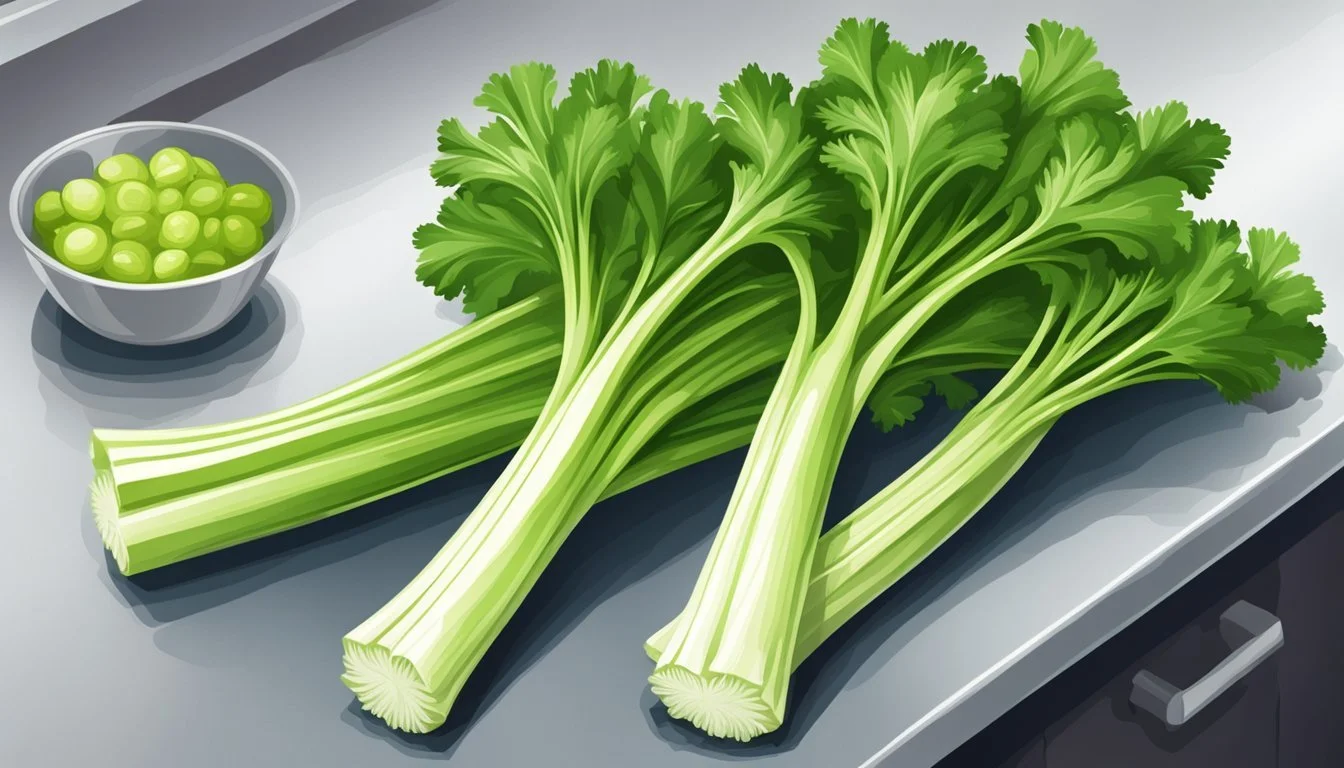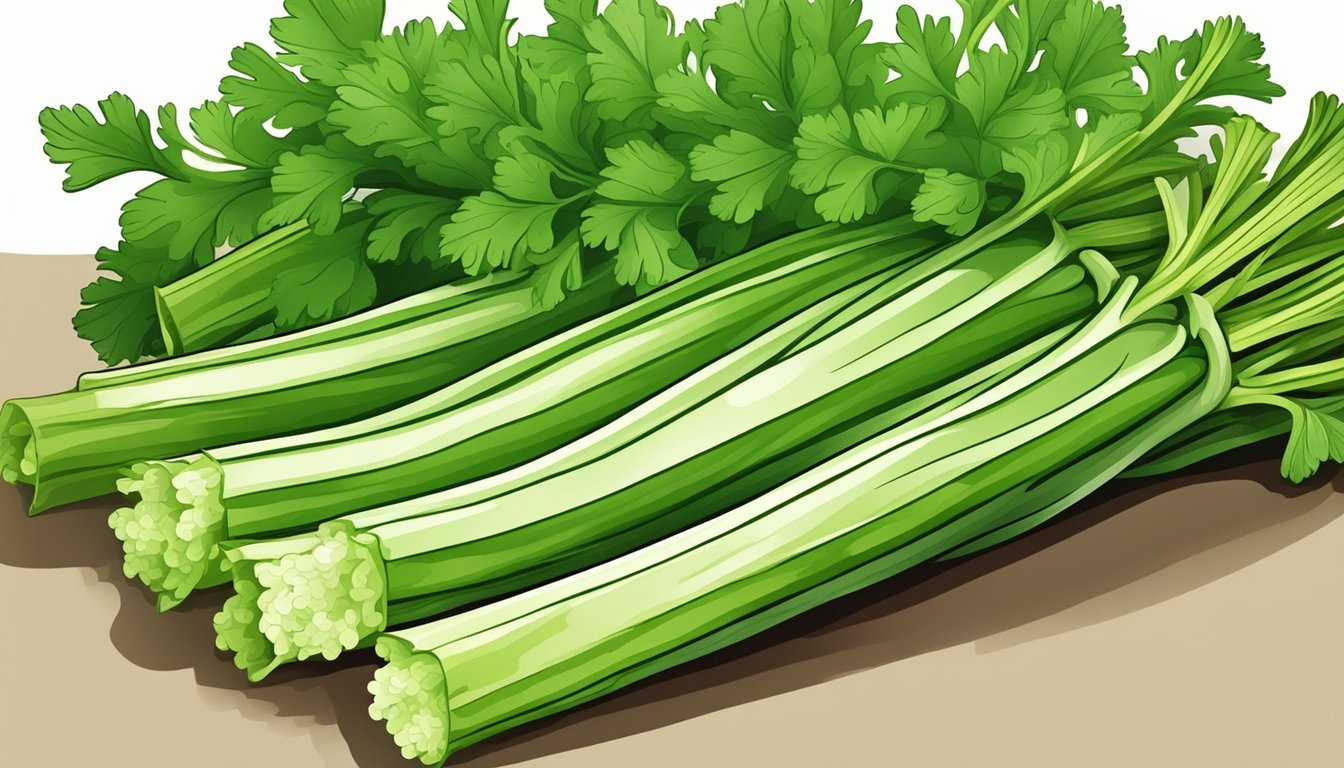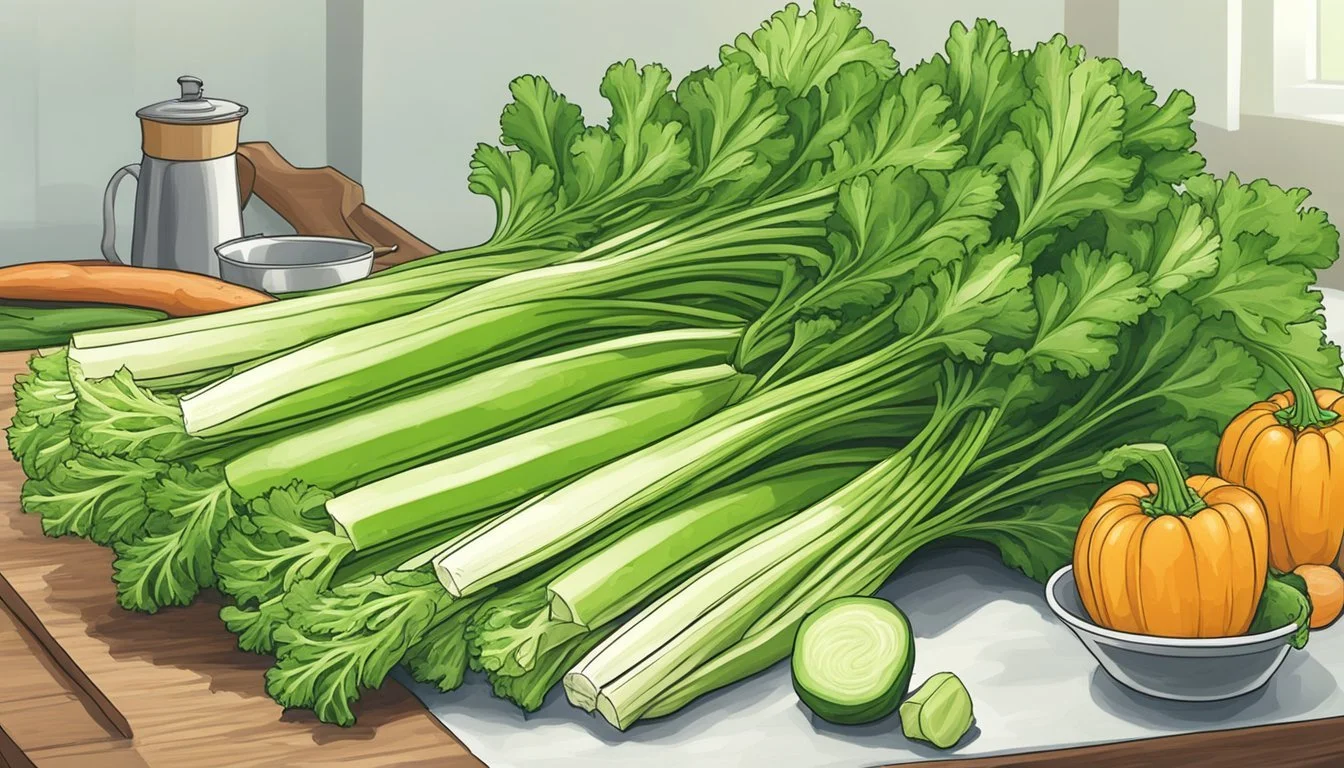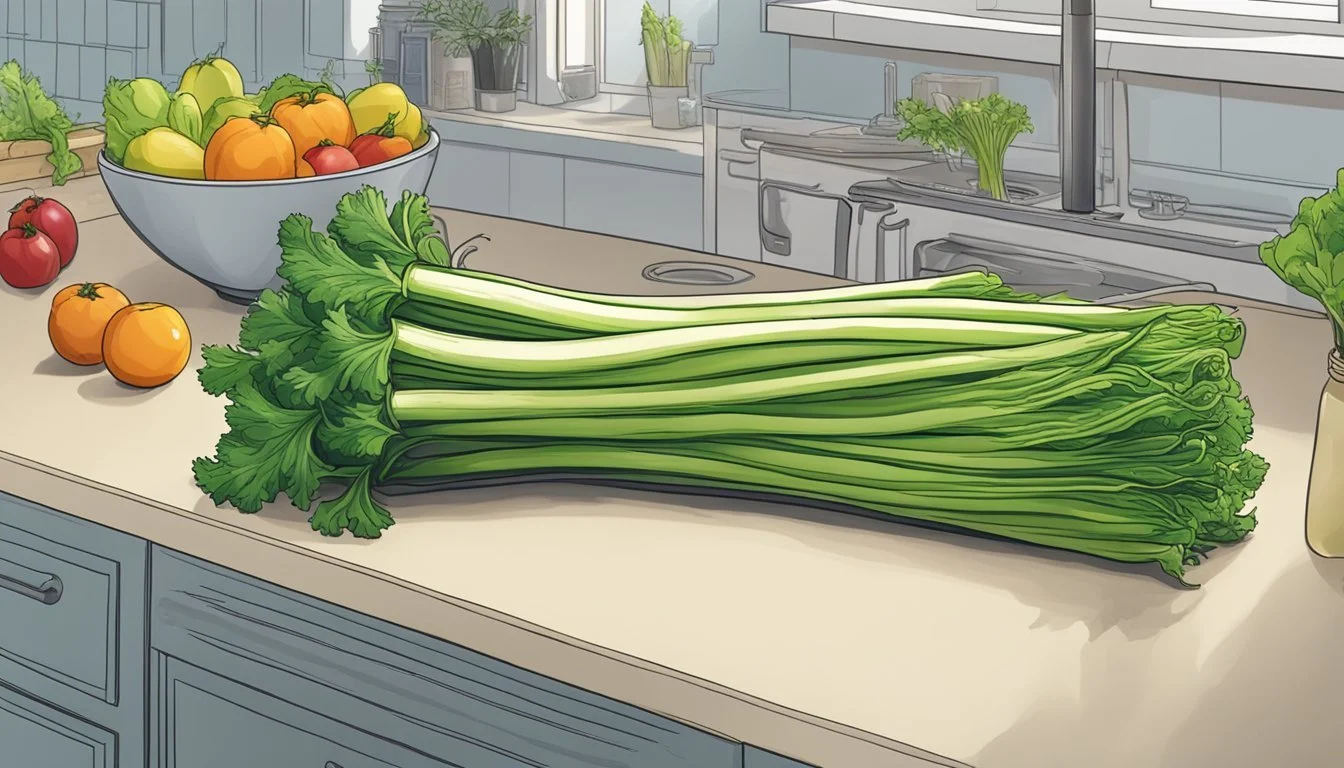Does Celery Go Bad?
Understanding Shelf Life and Storage Tips
Celery, like all fresh produce, has a limited shelf life and can indeed go bad. It's important for consumers to recognize when their celery has passed its prime to ensure they're enjoying it at its best and avoiding potential food waste. The longevity of celery is influenced by various factors including storage method, temperature, and its freshness at the time of purchase.
The most evident signs of celery's decline include wilting or floppiness of the stalks, discoloration to a pale or yellow hue, and softness rather than the characteristic crunchiness. A hollow center is another indication that celery is no longer at its peak quality. Although some of these symptoms can be mitigated by proper storage, such as keeping whole celery in the refrigerator, they serve as reliable indicators for when it's time to utilize or dispose of this vegetable.
When celery starts to lose its moisture and firmness, it diminishes not just in texture but also in flavor, making it less appealing to use in culinary applications. It's also worth noting that while some deteriorative changes in celery might make it unpleasant to eat, they do not necessarily mean it poses a food safety risk. However, any presence of a strong or acrid odor, signs of mold, or sliminess are clear signs that the celery should be discarded for safety reasons.
Celery Basics
Celery is a versatile vegetable that is often included in a variety of dishes, both cooked and raw. It belongs to the family Apiaceae, and it is known for its long fibrous stalks tapering into leaves. Typically, celery boasts a pale to bright green color and possesses a distinctive crisp texture when fresh.
The vegetable is low in calories but rich in nutrients. It provides a good source of vitamin K, vitamin C, potassium, and folate, among other vital nutrients. These elements contribute to the dietary value of celery, making it a popular choice for healthy snacking and cooking.
When purchasing celery from the produce section, consumers aim to find stalks that are firm and crunchy to the touch. Fresh celery should snap easily when bent and emit a fresh, clean smell. The leaves at the top should appear vibrant and green, with no signs of yellowing.
Here's a brief overview of the characteristics of fresh celery in terms of texture and nutrients:
Texture: Firm, crunchy
Color: Pale to bright green
Leaves: Vibrant, green without yellowing
Smell: Fresh and clean
Celery's high water content contributes to its crunchy texture, which can be a refreshing addition to salads or a crunchy contrast in cooked dishes. It’s important for consumers to store celery properly to maintain its desirable qualities. A vegetable crisper in the refrigerator is often recommended for optimal storage conditions, keeping the celery crisp and fresh for longer periods.
Freshness Indicators
When assessing the freshness of celery, there are several key indicators to examine. These include changes in appearance, texture, and smell, which can all signal whether the celery is still good to consume or has gone bad.
Visual Signs
Celery's visual appearance can reveal much about its freshness. A healthy celery stalk should have a vibrant green color. Signs of spoilage include:
Discoloration: Yellow or brown patches may indicate the celery is past its prime.
Black Spots: The presence of black spots can suggest mold growth.
Wilting: Leaves that are no longer upright and appear droopy are a sign of age.
Texture
The texture of celery is a reliable indicator of its freshness:
Firmness: Fresh celery should feel firm to the touch.
Crisp Texture: A crisp stalk snaps easily; if the celery bends without breaking, it's losing its freshness.
Slimy: Any sliminess can indicate spoilage, and slimy celery should not be consumed.
Smell
A fresh scent is characteristic of good celery:
Odor: Celery should have a clean, mild smell. An off or strong smell is a clear indication the celery may be bad.
Storage Techniques
Proper storage is essential for keeping celery fresh and extending its shelf life. Whether refrigerating, freezing, or storing in water, using the right technique can preserve the crunchy texture and flavor of celery.
Refrigeration
Celery should be stored in the refrigerator to maintain freshness. Wrapping it tightly in aluminum foil or placing it in an airtight container with a damp paper towel can prevent moisture loss. For best results, place celery in the crisper drawer, which is the coolest part of the refrigerator and helps keep it crisp.
Freezing
To freeze celery, blanch it first by boiling for a few minutes and then plunging it into an ice bath. Dry the celery thoroughly before placing it in a freezer bag or an air-tight container. This method can extend the shelf life for a year or more, preserving its texture, color, and flavor.
Storing Celery in Water
For celery that has lost some of its crispness, trimming both ends and soaking it in ice-cold water can revitalize it. One can store celery in a container with a small amount of water in the refrigerator to help it maintain crispness for a slightly extended period as long as water is changed regularly.
Celery Shelf Life
The shelf life of celery varies depending on whether it is whole or cut and on the methods used to store it. Whole celery can typically last 3 to 4 weeks when stored properly in the refrigerator. This longevity is because the intact structure of the vegetable helps retain moisture and slows down degradation.
Once celery is cut, it becomes more vulnerable due to its increased exposure to air and dehydration. Cut celery should be expected to last about 1 week if it is stored in a sealed plastic bag or airtight container in the refrigerator.
To maximize the shelf life of celery, it is essential to keep it crisp and hydrated. The following storage tips can help preserve the freshness of celery:
Whole Celery:
Refrigerate in a crisper drawer.
Keep it in a plastic bag to retain moisture.
Cut Celery:
Store in an airtight container or sealed plastic bag.
Consider wrapping the celery in paper towels before enclosing it in a container/bag to absorb excess moisture.
Below is a summarized table of the expected shelf life of celery under different conditions:
Celery Type Shelf Life Fresh Whole Celery 3-4 weeks in the refrigerator Celery Packages 2-3 days Cut Celery 1 week in a sealed container Cooked Celery 1 week
It is worth noting that these durations are estimates, and actual shelf life can vary based on factors such as the freshness at the time of purchase and the consistency of refrigeration temperatures.
Spoilage Prevention
Extending the shelf life of celery involves proper storage and handling techniques. These practices are pivotal in keeping the vegetable fresh, crisp, and free from spoilage for as long as possible.
Proper Handling
When one purchases celery, it should be washed and dried thoroughly to remove excess moisture, which can accelerate spoilage. The best way to store celery is to wrap it in aluminum foil or a paper towel and then place it inside a plastic bag before refrigerating. This method allows the celery to breathe and stay hydrated without becoming too moist. It is recommended to store celery in the crisper drawer of the refrigerator to provide an optimal environment for preserving its freshness.
Ethylene Consideration
Celery is sensitive to ethylene, a natural gas produced by many fruits and vegetables that can hasten ripening and, ultimately, spoilage. It is important to store celery away from ethylene-producing items like apples, bananas, and tomatoes. An ethylene-absorbing product can also be used within the storage space to reduce the ethylene levels in the environment, thus lengthening the life of sensitive vegetables such as celery.
Safe Consumption
When it comes to the consumption of celery, understanding the indicators of spoilage is crucial for preventing foodborne illness. Ensuring celery is safe to eat involves recognizing when the vegetable has spoiled and knowing the proper ways to handle food to prevent contamination.
Signs of Spoilage
Color: Fresh celery should have a vibrant green color. Brown spots or discoloration are indicators of spoilage.
Texture: Celery is known for its crisp texture. If the stalks become soft, limber, or exhibit slime, it's no longer safe to consume.
Smell: An off or strong smell is a clear sign that celery should not be eaten.
Food Safety
Food Poisoning: Consuming spoiled celery can lead to food poisoning. Symptoms may include nausea, vomiting, and diarrhea.
Prevention: To prevent foodborne illness, one should discard celery that shows signs of spoilage. This includes any celery with slime, brown spots, or a strong unpleasant odor. It's also essential to wash celery thoroughly before eating to eliminate potential contaminants.
Maximizing Usage
Celery can lose its crispness over time but can still be used effectively in a variety of culinary applications. To maximize its use, one can apply methods to revive limp celery or incorporate it into cooking, making the most out of this versatile vegetable.
Revitalizing Limp Celery
Celery that has lost its firmness can often be brought back to life. Simply trim the ends of the stalks and place them in a bowl of ice water for around 30 minutes. Revival is frequently successful because the stalks reabsorb water, regaining their crispness. This crispness is especially important for salads or when using celery as a garnish.
Utilizing Celery in Cooking
When celery passes the point of revival, it still remains an excellent ingredient for various recipes. It can be:
Chopped and used in soups to add a mild, pleasant flavor.
Sliced to serve as an aromatic base for vegetable broth or stews.
Included in smoothies or juice blends for a nutritious boost.
Celery's ability to withstand prolonged cooking also makes it ideal for braises and casseroles. Cooked celery contributes to the overall texture and taste profile of a dish while providing its nutritional benefits.
Common Concerns
When it comes to the shelf life of celery, many consumers have concerns regarding its freshness and safety. These inquiries often fall into several recurring questions:
Frequently Asked Questions:
Does Celery Go Bad?
Celery does go bad, and several indicators signal its decline in freshness, such as wilting leaves, dryness, or a slimy texture.How Long Does Celery Last in the Fridge?
Typically, celery can last between 1-2 weeks in the fridge when stored properly in a plastic bag or wrapped in aluminum foil to maintain its humidity and crispness.
Identifying Freshness:
Color: Look for a vibrant green color. Pale or yellowed celery is likely past its prime.
Texture: Fresh celery is firm and snaps cleanly. Soft or bendable stalks suggest deterioration.
Smell: Fresh celery has a mild, clean scent. Any strong or off smells are warning signs.
Safe to Eat Celery:
Visual Inspection: Discard if there are visible signs of mold or decay.
Tactile Check: If celery feels slimy, it's no longer safe to consume.
By understanding these pointers, individuals can confidently determine the freshness and safety of their celery, ensuring that they make the most out of this versatile vegetable.








